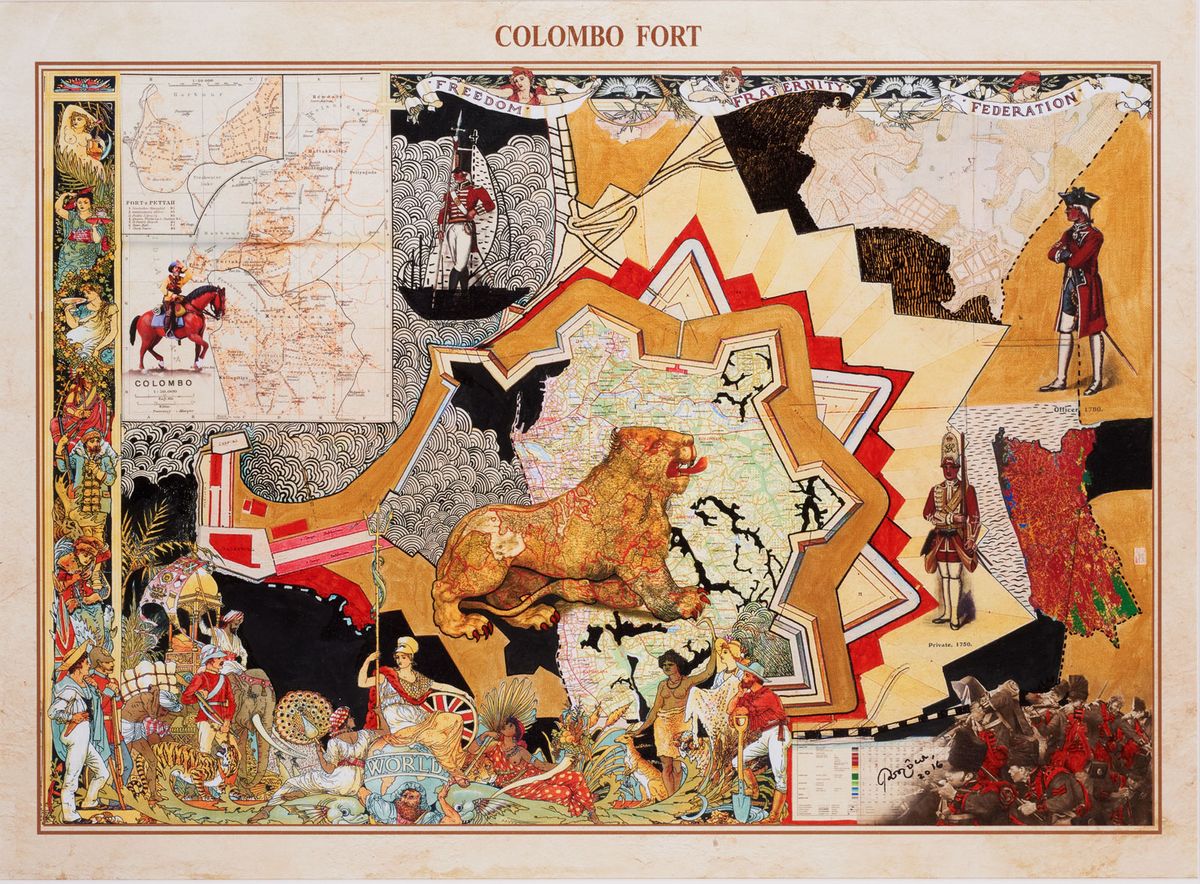Kapwani Kiwanga’s decaying flower installations in Undefined Territories at Museu d’art contemporani de Barcelona (until 20 October; €10) serve as pertinent reminders. Based on floral arrangements from the independence ceremonies of various African countries, they recall national dreams unrealised decades after supposed liberation. Fresh upon installation, the flowers have since withered and now herald the final week of this incisive, wide-spanning group show in which 18 international artists reflect on colonial legacies. Each offering examines the ways in which the colonial project continues to reverberate years after its apparent departure through crudely rewritten borders, imposed languages and even neoliberal economics. Here, Munem Wasif's monochrome photograph series on contested land between India and Bangladesh is placed alongside Pala Pothupitiye's reimagined maps of Sri Lanka and Alán Carrasco's faint wall painting of the forgotten Peruvian indigenous rebel leader Túpac Amaru II. The show also contains a particularly strong selection of video works, most notably a captivating film Kwassa Kwassa (2015) by the Copenhagen-based collective Superflex, which patiently details the sea crossings made by migrants between two Comoro Islands. This panoptic view is at points overwhelming but provides an acutely political critique that drills home the fact that colonial legacies will not disappear quietly but instead must be actively rewritten.
Return of the Junker-JM2000 at Bombon Projects (until 6 December; free) is a first-time collaboration between the artists Josep Maynou and Jordi Mitjà which sees the product of a two-month residency at Mitjà’s countryside studio where they 'pimped a ride' and then subsequently ripped it apart. The dismembered pieces of the disused racing car lie around the gallery, with its hacked-off frame spray-painted in a loud fluorescent-yellow patina that sits somewhere between cheetah print and Carrara marble. Some parts have also been brazenly fashioned into classically proportioned chandeliers—think Tiepolo meets Top Gear—and a series of hood ornaments span the gallery’s circumference. The show broaches some fairly typical points—what constitutes high and low culture, the obsolescence of machinery, etc. What makes this show better than the sum of its auto-parts is the obvious element of fun and high spirits that went into its creation. Hopefully this will not be the last time we see the combination of Maynou’s metal wielding experience with (as the gallery’s director termed it) Mitjà’s “trashy hipster aesthetic”.
Things are not quite as they appear at Loud Whisper, a solo exhibition of the Portuguese artist Diogo Pimentão’s at RocioSantaCruz gallery (until 30 November; free). Pimentão plays with the visual properties of graphite to apprehend the viewer, covering thickly folded sheets of paper in the lustrous mineral to uncannily resemble bent steel bars. Round concrete sculptures are also covered in the stuff, mimicking stones on which he has embedded to-scale handwriting from the school books of his four children. This all provides a welcome playfulness to an otherwise austere looking monochromatic show that derives heavily (and professedly) from Minimalism. The show’s final work, a pencil drawing, was created through a blindfolded performance given on the night of its opening, a further firm nod to Rebecca Horn and fellow body artists.


